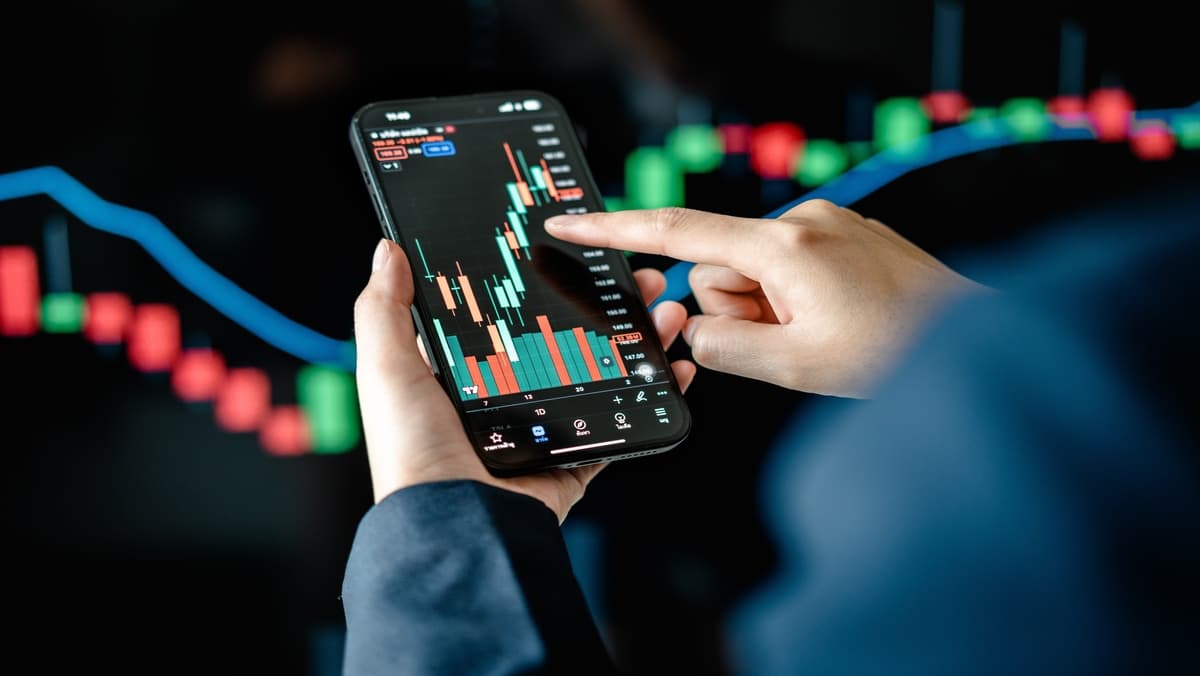
CFDs sind komplexe Instrumente und umfassen aufgrund der Hebelfinanzierung ein hohes Risiko, schnell Geld zu verlieren. 72,3% der Privatanlegerkonten verlieren Geld, wenn sie mit diesem Anbieter CFDs handeln. Sie sollten überlegen, ob Sie wirklich verstehen, wie CFDs funktionieren, und ob Sie es sich leisten können, das hohe Risiko von finanziellen Verlusten einzugehen.
Freitag Oct 24 2025 09:17

8 min

Trading Traps explained: In the world of trading, traps can catch even the most experienced participants off guard.
Among these, the bull trap is a common pitfall that can lead to unexpected losses and frustration. Understanding what a bull trap is, how it forms, and strategies to steer clear of it is crucial for navigating markets effectively. This article delves into the nature of bull traps, their warning signs, and practical ways to avoid falling victim to them.
A bull trap occurs when the price of an asset gives a false signal that a downward trend has reversed and an uptrend is beginning. This misleading move tempts buyers to enter the market, believing the asset is poised to rise. However, shortly after, the price reverses again and moves downward, trapping those who bought in prematurely.
This phenomenon can create confusion and losses because it mimics a breakout or recovery but lacks the follow-through needed for a sustained upward move. Understanding this pattern helps traders avoid making decisions based on false hopes.

Bull traps often arise due to a mix of market psychology and technical market behavior. They can occur in various market conditions, including during corrections in a downtrend or in choppy, sideways markets.
Several factors contribute to the emergence of bull traps:
Recognizing a bull trap before committing to a trade can save traders from losses and emotional distress. Here are some key warning signs to watch for:
1. False Breakouts
A classic indicator of a bull trap is when the price breaks above a resistance level but fails to maintain that level. The breakout may look convincing initially, but soon after, the price falls back below the resistance, indicating the breakout was not genuine.
2. Weak Volume Behind the Move
Strong price movements should be supported by substantial trading volume. If the price rises on low or declining volume, it suggests a lack of conviction, increasing the chances of a reversal.
3. Divergence in Momentum
Momentum indicators can provide clues about the strength of a price move. If the price is making higher highs but momentum indicators are not confirming this by also showing strength, it can signal a weakening trend and potential trap.
4. Overextended Price Action
If the price has surged quickly without a solid foundation or after a prolonged downtrend, the move may be overextended and due for a pullback.
5. Market Environment
Bull traps are more frequent during uncertain or volatile periods where price swings are erratic and market sentiment swings widely.
After a Downtrend: When an asset has been falling, a temporary rebound can appear as a trend reversal, tempting traders to buy too early.
Sideways Markets: In choppy markets with no clear direction, false breakouts are common as the price oscillates around support and resistance levels.
News-Driven Moves: Sudden news or events can cause sharp price spikes that quickly reverse, creating traps for those reacting too quickly.

Avoiding bull traps requires discipline, patience, and a structured approach to trading decisions. Here are some strategies to consider:
1. Wait for Confirmation
Instead of entering a trade immediately after a breakout or price rise, wait for confirmation that the move is sustainable. This could mean waiting for a second close above the breakout point or evidence of continued strength in subsequent trading sessions.
2. Look for Volume Support
Check whether the price movement is accompanied by increased trading volume. A genuine breakout typically shows strong participation, while a weak move on low volume is more suspect.
3. Use Multiple Indicators
Relying on a single signal can be risky. Combining price action analysis with momentum or trend indicators can help verify the strength of the move. For example, if momentum indicators support the breakout, the chance of it being genuine increases.
4. Set Protective Stops
Using stop-loss orders can limit potential losses if the price reverses unexpectedly. Placing stops just below key support levels or the breakout point can help manage risk.
5. Avoid Trading Based on Emotion or Hype
Emotional reactions to market news or rapid price changes can lead to impulsive decisions. Maintaining a calm and systematic approach helps avoid chasing false moves.
6. Study Market Context
Understanding the broader market environment, including recent trends and volatility, can help assess the likelihood of traps. In uncertain times, it may be wise to be more cautious.

Psychological Impact of Bull Traps
Bull traps can have a strong psychological effect on traders. Being caught in a false breakout can lead to frustration, loss of confidence, and impulsive trading mistakes. Recognizing this emotional component is vital.
Developing mental resilience and sticking to a well-defined trading plan can mitigate the impact of such setbacks. Learning from previous experiences with traps can also improve future decision-making.
The Role of Patience in Avoiding Bull Traps
Patience is one of the most valuable traits for traders aiming to avoid bull traps. Waiting for clear signals and confirmations before entering a trade reduces the chance of falling into traps.
It may feel tempting to act quickly when a price starts moving upward, but premature entries expose traders to unnecessary risks. Allowing the market to prove its direction can lead to more reliable trading outcomes.
A bull trap is a common challenge in trading, where a false upward breakout lures traders into buying before the price reverses downward. These traps occur due to a combination of market dynamics and psychological factors.
Identifying bull traps involves watching for false breakouts, weak volume, momentum divergence, and overextended price moves. Avoiding them requires waiting for confirmation, using multiple tools for validation, managing risk with stops, and maintaining discipline.
By understanding the nature of bull traps and adopting careful trading habits, participants can better navigate markets and reduce the risk of being caught in misleading price moves.
Navigating trading traps like the bull trap demands awareness, preparation, and patience. While no method guarantees avoidance of every false signal, combining practical strategies and emotional discipline helps traders make more informed choices.
Recognizing the warning signs early and approaching breakouts with caution can improve the quality of trading decisions. Ultimately, understanding and respecting market behavior is key to minimizing the impact of traps and progressing toward more consistent results.
Risikowarnung: Dieser Artikel gibt nur die Meinung des Autors wieder und dient lediglich als Referenz. Er stellt keine Anlageberatung oder Finanzberatung dar, noch repräsentieren er die Haltung der Markets.com Plattform.Wenn Sie Aktien, Indizes, Devisen und Rohstoffe für den Handel und für Preisprognosen in Betracht ziehen, denken Sie daran, dass der Handel mit CFDs ein erhebliches Risiko birgt und zu einem Kapitalverlust führen kann.Die Wertentwicklung in der Vergangenheit ist kein Indikator für zukünftige Ergebnisse. Diese Informationen werden nur zu Informationszwecken bereitgestellt und sind nicht als Anlageberatung zu verstehen. Der Handel mit Kryptowährungs-CFDs und Spread-Wetten ist für alle britischen Privatkunden eingeschränkt.